
 Skip to content
Skip to content
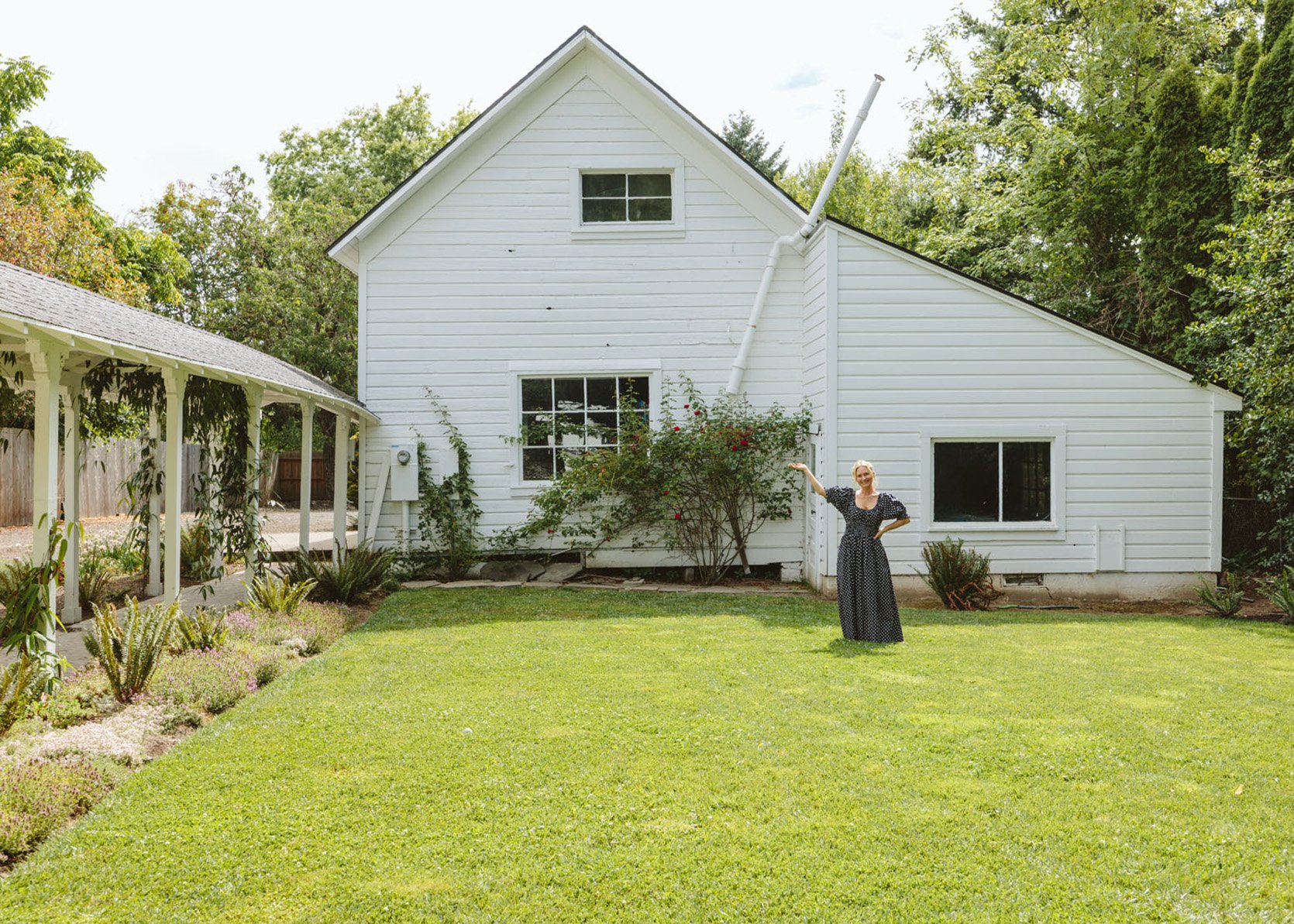
Our Guest Cottage Update: How Much Will The Foundation Repair Cost???
Happy national “Reveal Your Foundation Repair cost” day. Brian advised against “cost honesty” (because he is my ultimate protector, which I appreciate), but I’m going to share some real numbers, similar to the asbestos and lead removal quotes (thanks for the feedback there). My hope is that these numbers can provide educational information for others (despite my fears – I’m very, very aware of how privileged we are to be able to even embark on this expensive project). This particular project is all about me learning and sharing, so it’s time to learn and share. Our original goal was to restore this house, make it a proper home to be able to live in (with some but not all bells and whistles), but that has shifted…keep reading. So today I’ll share our four foundation quotes, and walk you through them all (and why we are dialing it back in a good way).
The Foundation Quotes
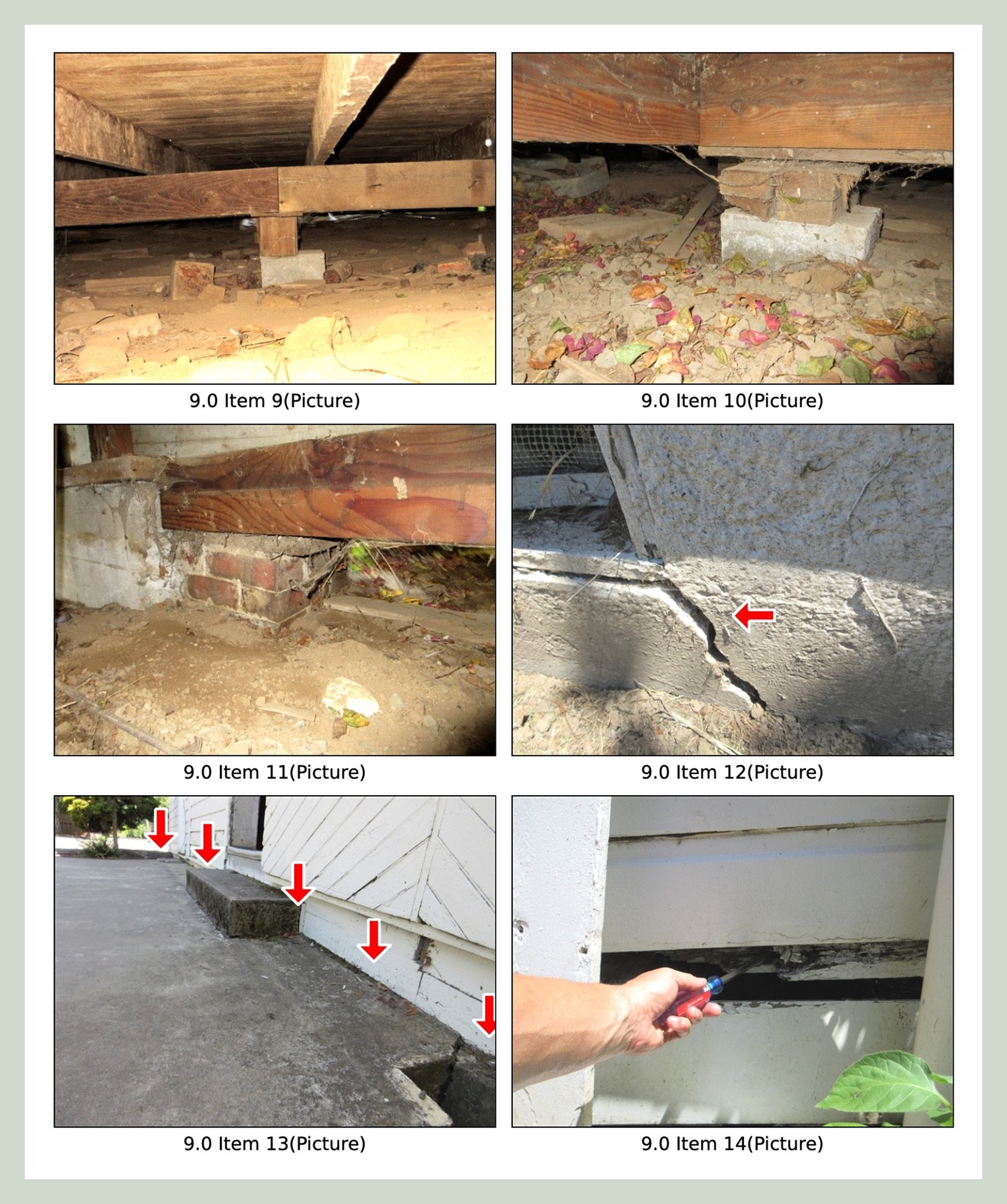
In our inspection report (above) from Tom said that it needed substantial foundation repair due to settling and some dry rot, but he told us over and over that the house in general was in really, really good shape. When you are in the house, it feels solid besides the sloping. Again, this is not our house that we are living in. It might be a place for my team to create content, the kids to play drums and ping pong with their friends, or sure, hopefully live after college. We have no intention of moving any walls (just adding a tiny bathroom), nor adding a ton of cabinetry or a 500lb cast iron tub. There is only one room that supports an upstairs room, and that room is actually in the best condition, foundation speaking. This house has been around for so long – surely we could just fix it and live with it being OK, but not perfect???? But I didn’t get to that epiphany til after the first quote…
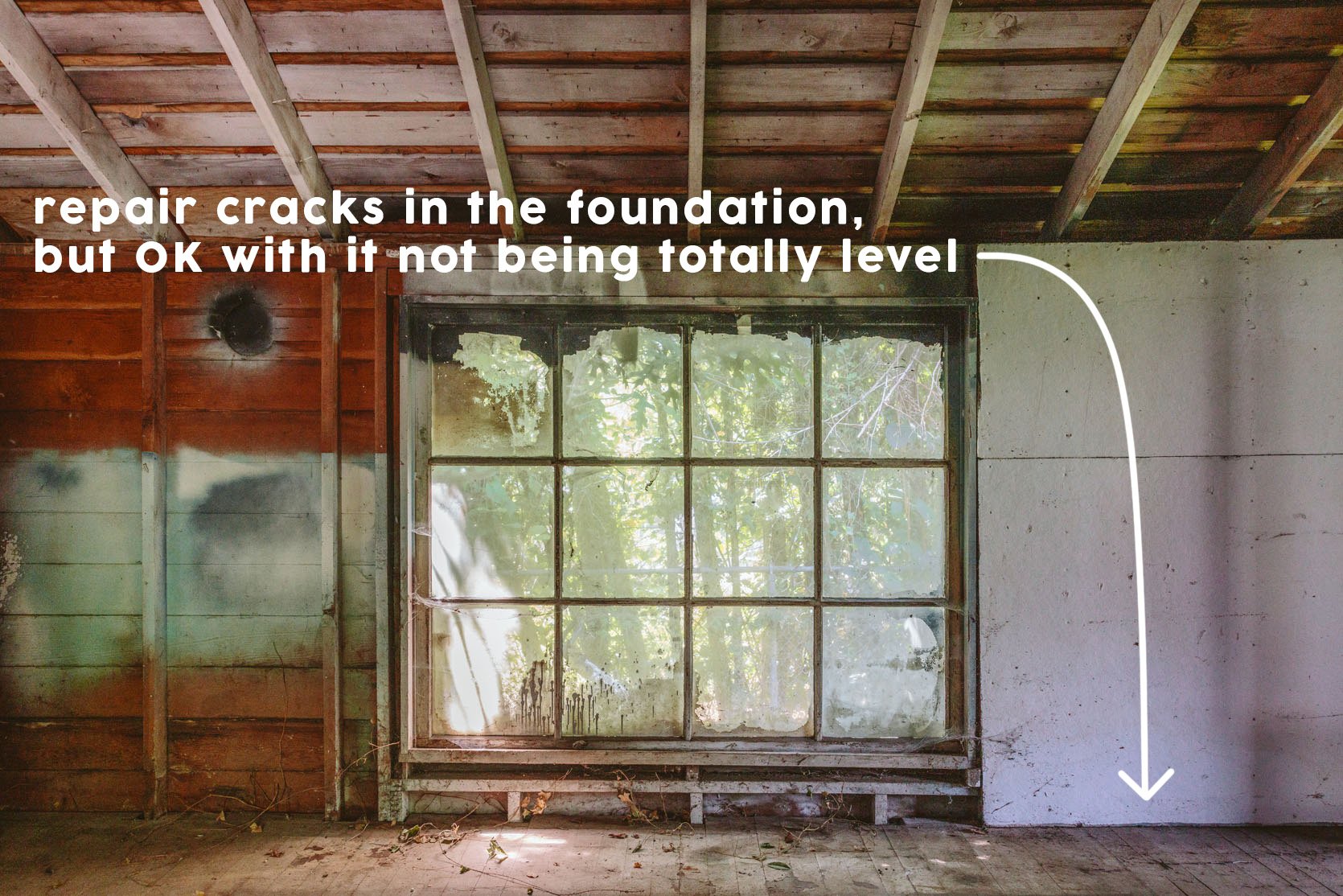
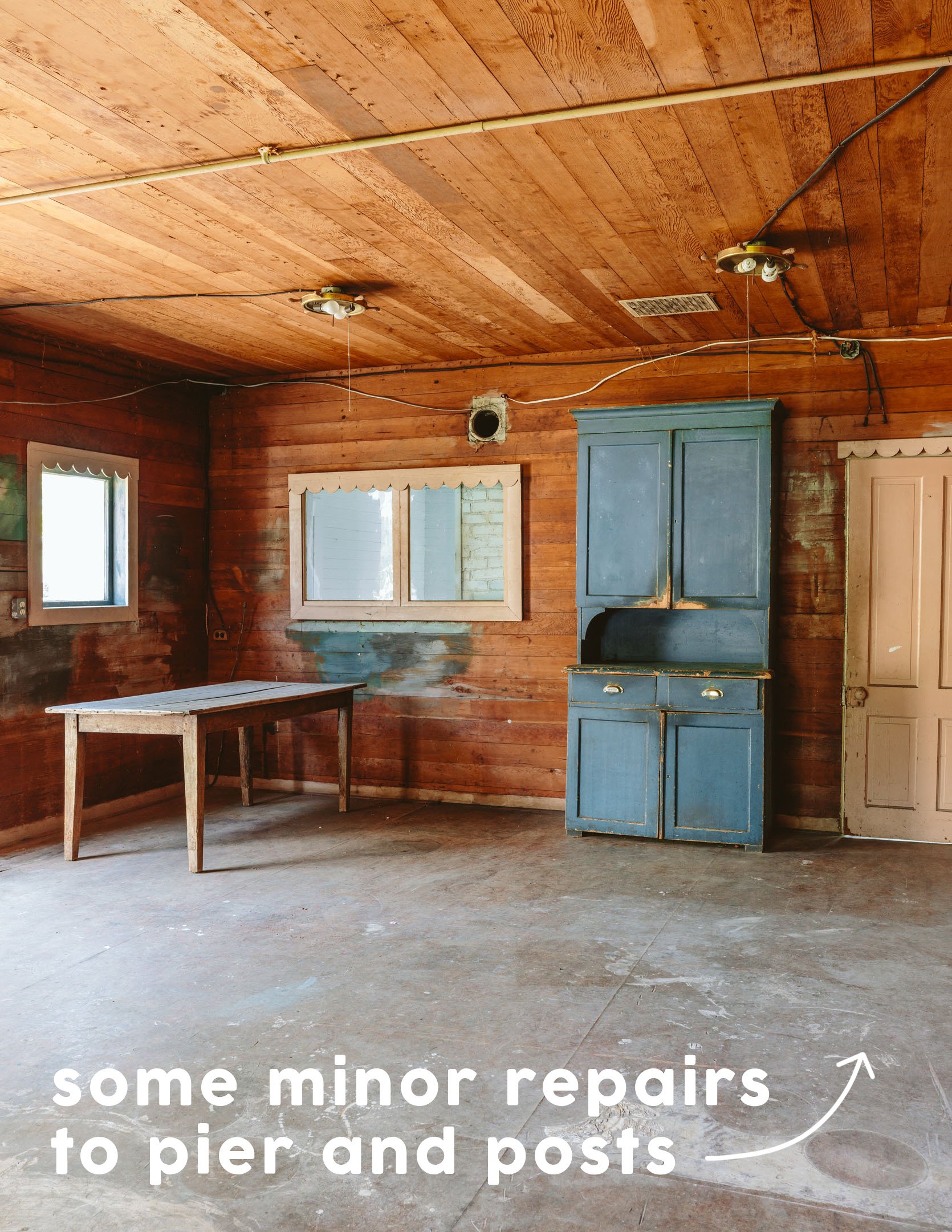
The First Quote – Company A (Hello Sticker Shock!)
The first quote, from Company A, came back at $114k with unknown additional costs to be added as they are discovered. This would include essentially redoing the entire foundation, using different methods for different rooms based on their individual needs (they were all built over time, so they all have different problems). It would require weeks of excavation, re-engineering, digging out crawl space, the works – over 2-4 months. I LOVED this contractor, by the way. He was so knowledgeable, communicative, experienced, and kind. Before he sent the quote, Brian and I were 95% sure we were going to hire him. But then once we got the quote, we looked at each other and had no idea how to proceed. We expected it to be a lot, but it simply didn’t make sense to spend this on this house that we don’t need (and the cost was sure to be much higher by the end). And yes, it could add some value to our property, but if we were to treat this like a proper renovation, it could cost well over $600k. And furthermore, foundation work isn’t even good design content! You can barely even shoot the repair process, and if we did it’s just dirt and wood. I will likely splurge here and there on really special design elements, but this first quote made us totally rethink our approach to this project (thus, us DIY-ing some of the asbestos and lead abatement). We had three other quotes scheduled and I’m so glad that we did…
Wait, But Didn’t The Grit And Polish Lift Their Entire House For 35K??
After I got the first quote, I re-read Kathy and Garrett’s post about how they lifted up their entire house (which was admittedly much smaller and before they added the second floor). They lifted and poured a new foundation (and the works) for $35k. For context, this was in 2021, an hour and a half out of Seattle (meaning this wasn’t 10 years ago and it was near a big city). This made me even more sure that we didn’t need to spend over 100k… We needed to get creative and lower our expectations, while keeping it safe. And it made me even more sure that publishing the costs will help others in similar situations make more informed decisions.
Our Second Foundation Quote:
This was by a massive nationwide company that I thought would be interested in the PR or social media stuff, and potentially offer a discount, but after they assessed and I told them that it was going to be a very “public project,” they backed out. He said that it wasn’t really what they did, and they didn’t feel comfortable doing it. Seems like they were more about strapping larger commercial buildings than repairing vintage farmhouses (and perhaps if they didn’t do a good job, there could be a bad PR experience). Not everyone is interested in getting blasted online 🙂
Our Third Foundation Quote:
This team came out twice, and I really liked them. Ultimately, they said they could do the works for well over six figures (similar to Company A) or do about 1/3 the work for 1/3 the cost (just repair or replace). While they were getting us actual numbers, I got the quote back from Company D (below), which blew us away…
Our Fourth And Final Quote
Company D approached things differently. They can do the massive house lifting/brand new foundation route, should it be in one’s budget, or they could simply repair and replace the problem areas. He said that they work with people of all budgets, and they have a really clean formula for what things would cost, calculated in a program. Once quoted, they do NOT go above that cost (which is not typical for contractors). He did multiple trips and spent a lot of time underneath the house in our 8″ crawl space to make sure they had all the information to plan and give an accurate quote. He asked a ton of questions, trying to understand what we really wanted for each room (and what concessions we were willing to make). Their first quote came back at $90k…. OOF.
But I really liked him, and I remember him saying that they work with all budgets. So I reached out and was super blunt. I asked, “What if we only wanted to spend $25k on repairing the foundation? What if, after thinking about it, we really just wanted to do the bare minimum to make it safe and last another 100 years, but not necessarily another 300 years. Yes, we wanted to level some of the extreme settling that is causing one room in particular to fall into the ground (the old prop room), but what if we didn’t try to make it perfect or brand new?? What’s the minimum they could do and the minimum we could spend to make it legal and safe???
He came back with a whole new plan, based on his experienced assessment of our foundation, reducing the scope by a TON. The new, reduced scope of work came back at $29k.
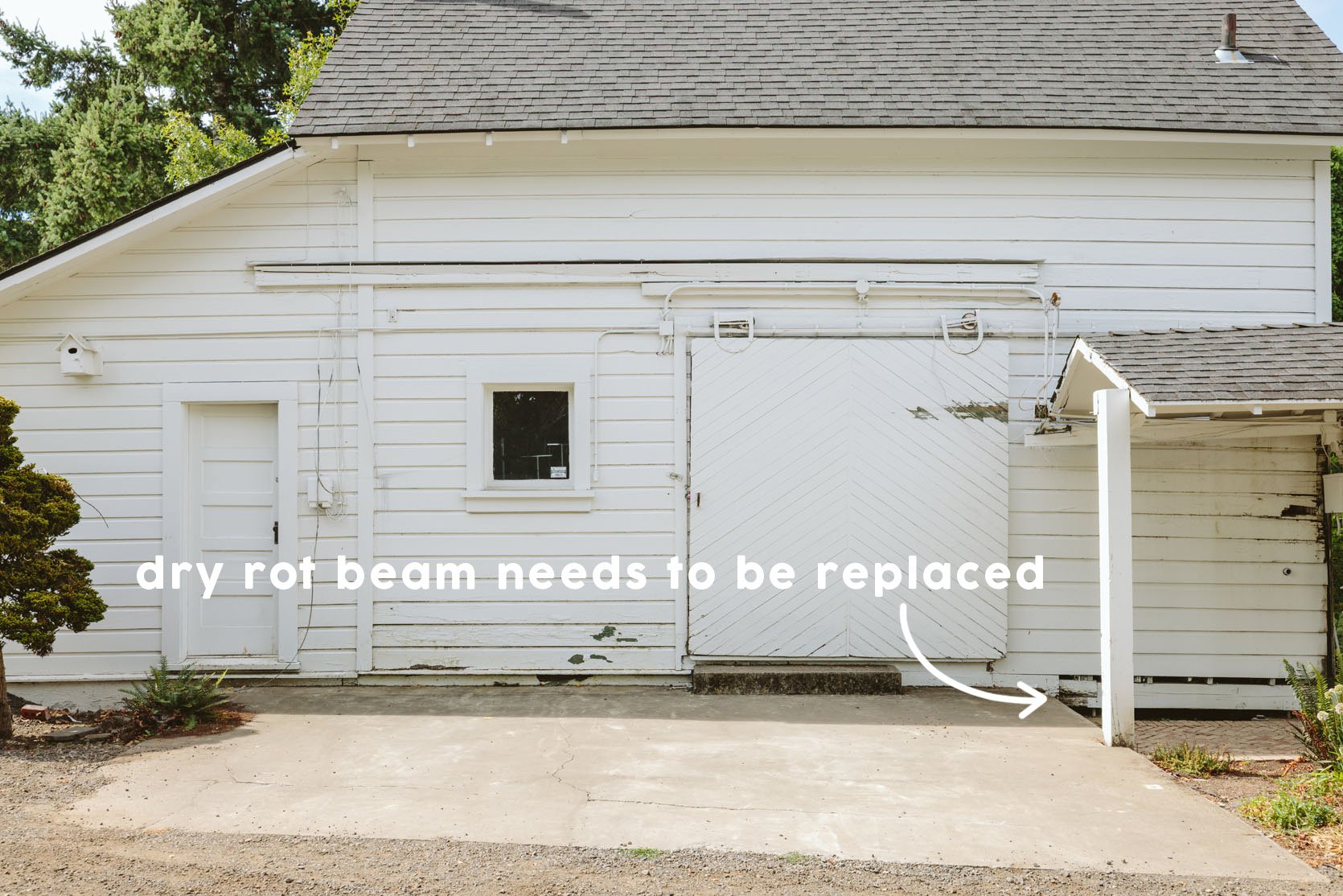
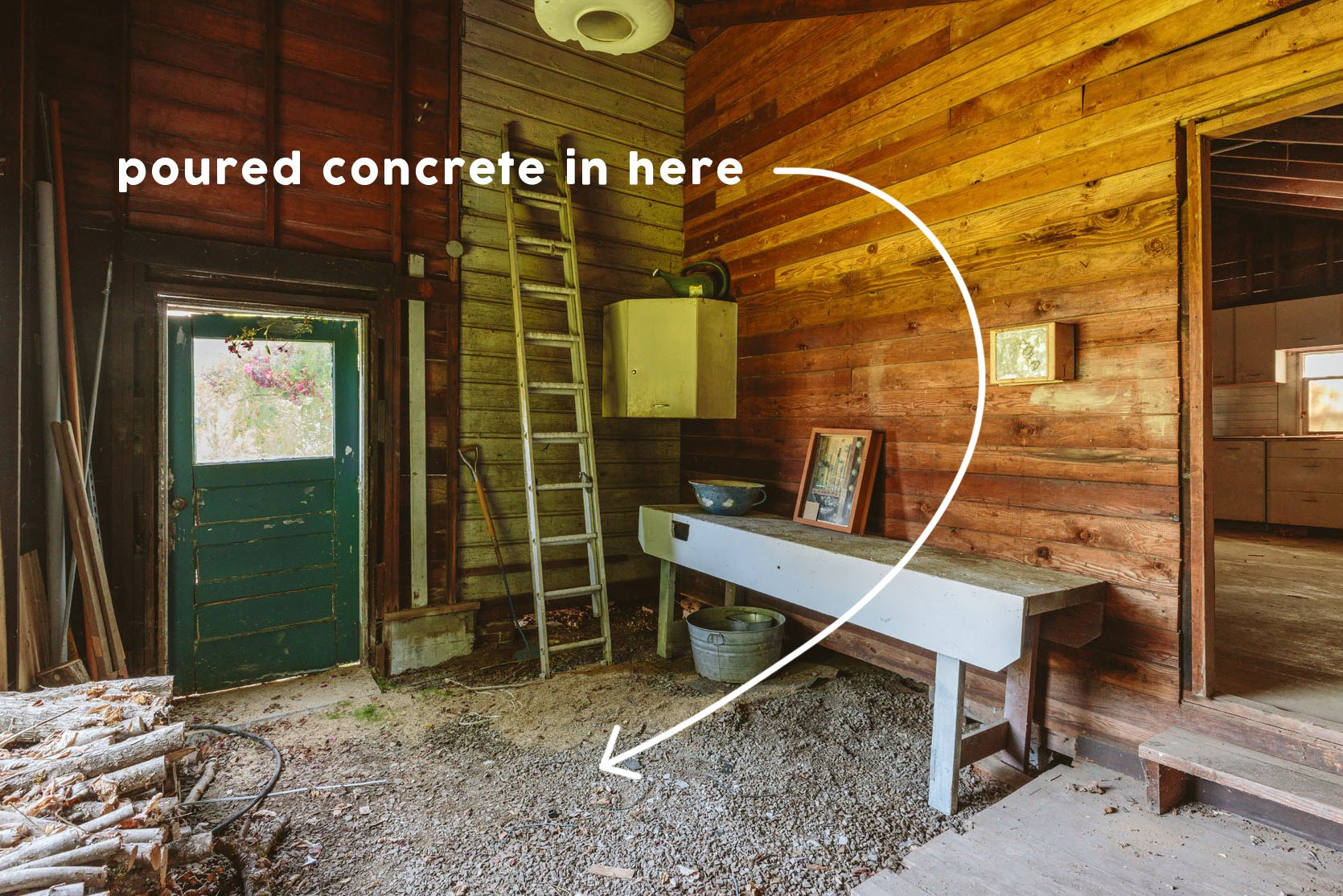
Now you might be worried that it’s going to be shoddy work, that the house is going to fall down, but I’m not, and neither is the contractor – they do this all day, every day. Basically, only one beam has dry rot (and will be replaced), the rest are fine, but the other companies (and Tom’s advice) were based on completely replacing everything for preventative measures (non-pressure-treated wood can rot). This company would do some light excavating, use some steel adjustable posts to replace the less strong pier and posts, lift the corner of the prop room and put it on a beam, repair the cracks in the poured foundation, and replace any dry rot. But if we were ok with the rooms not being perfectly level, a little wonky, no 90 degree angles, but very safe, then he could do it for that price.
HALLELUJAH!!!!!
Y’all, I can’t stress this enough, so don’t freak out and be worried for us: This house is strong. We aren’t moving walls. It’s been around for almost 200 years, and everybody says it’s in great shape. Is it as strong as a newly engineered/built house? Nope. But it never will be, no matter how much dough we put in it. There is only one room that supports a room above it, and that room is in great shape – its original engineering is strong. The rooms that need more help are the added-on rooms – the prop room, canning room, and gardening shed, which don’t support anything but a roof. I remember reading a few comments from a couple of you, warning me that when a house is this old and cobbled together, messing with it a lot might make it weaker. You are just throwing good money after bad. Extensive foundation repairs won’t guarantee 90-degree angles or a perfectly flat floor. When houses are this old, you either work with them to repair and make them better, put in hundreds of thousands of dollars or more to completely make them “brand new” (essentially what we did for our home), demo them out and start over, or give up. For this guest house, we are going with the Fourth Quote, and we feel GREAT about this, while understanding that this is still a TON of money at $29k.
Like all of life, it’s all about balance. We are now constantly reminding ourselves what we really want out of this house – not a fancy restored cottage with a pebble ice machine, but a pretty, cute cottage full of vintage charm. We are setting up boundaries and parameters for budget and time, and then having fun within them (much like parenting). This house will be a fun flex space with bare minimum amenities and a lot of charming details through vintage and DIYs. The more we pare it back, the more excited I get about it.
*Pretty Photos by Kaitlin Green

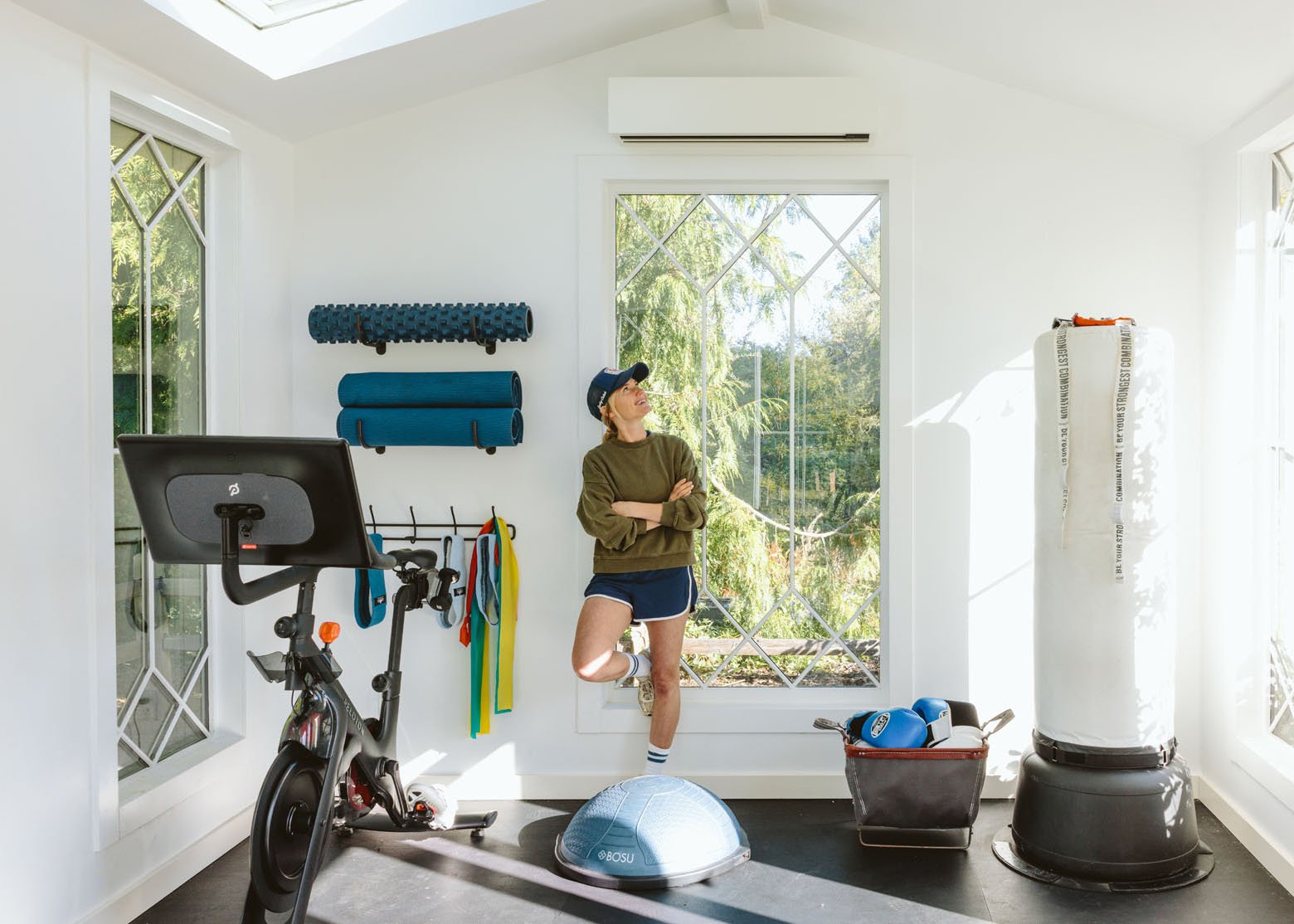
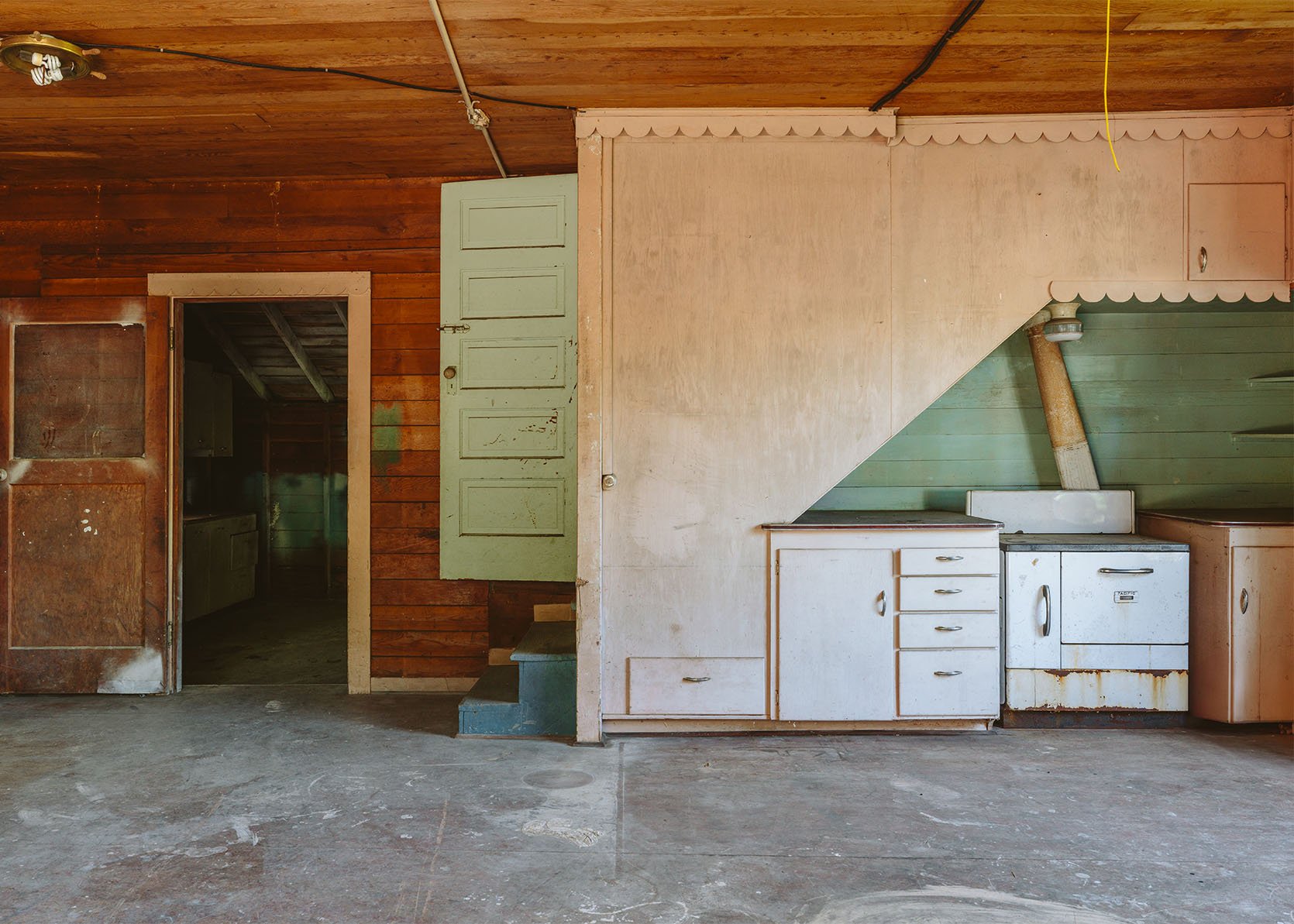
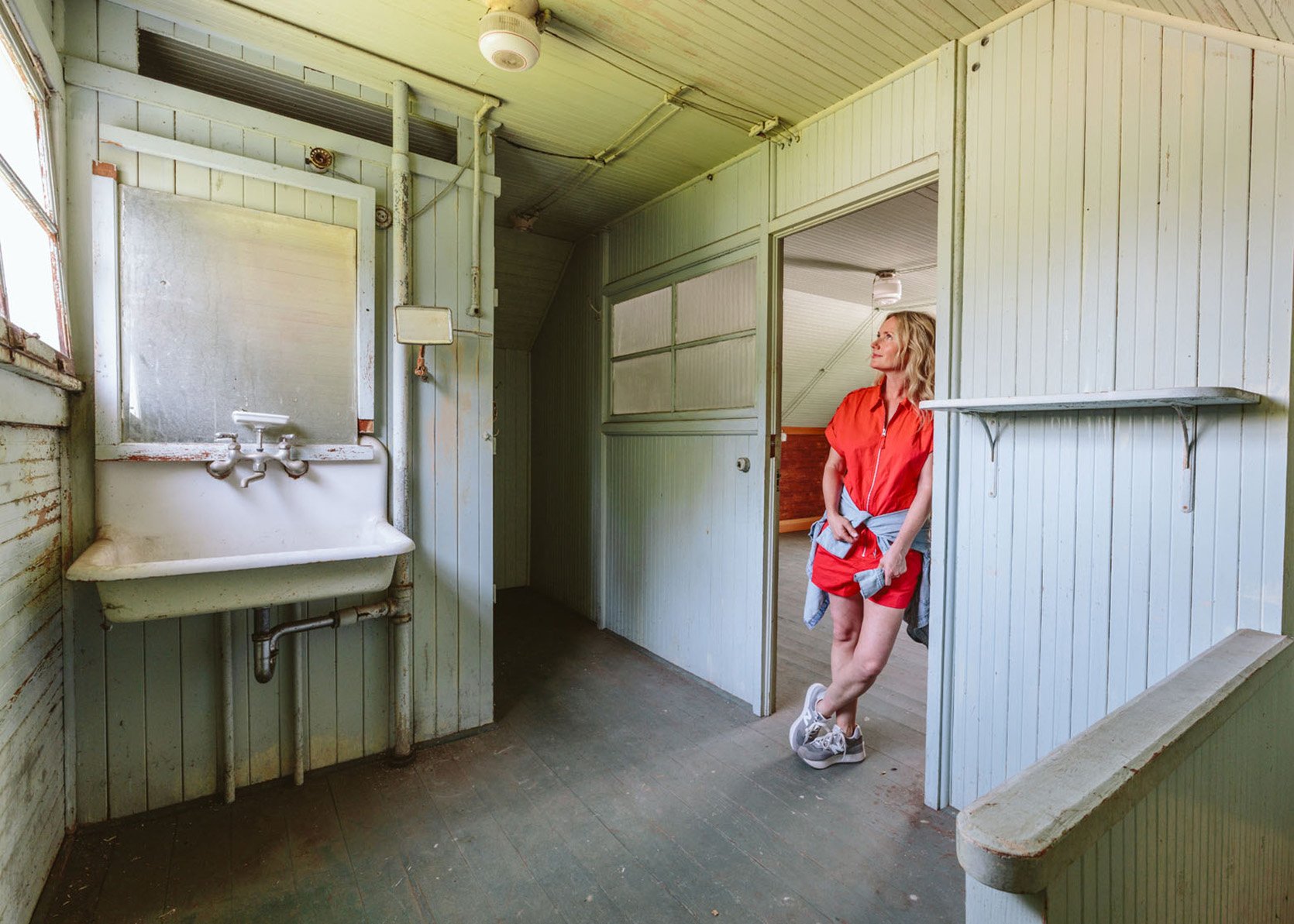
I think it’s great that you’re willing to admit actual costs online. Am I jealous? Yes! Have I put the effort in to creating a lifestyle and design brand that wins readers and clients and runs for decades? Um, no. So what’s the point in being sniffy about different budgets?!
Anyway, I had some damp treatment done to my flat a couple of years ago, and replaced some floor joists on the ground floor. The damp guys replaced the rotting joists and fixed the water ingress (blocked up air bricks under the floor was causing damp and rot), and they sprayed the old timber that was sound but not pressure-treated with some kind of preservative spray which would prevent them from rotting in the future. You might already be getting that, but if not it’s worth investigating.
OOH interesting!!! thanks for sharing. And yah, I think that people are understandably triggered by money stuff now and always. So i’m just really really sensitive to making sure its helpful and not hurtful. Thanks for your support. xx
Thank you for being so open about the cost and your thought process. I find it all very interesting. Sorry that anyone would give you grief about it.
Thank you for sharing! This was an interesting post! Good luck with the project. There is a lot of potential here!
$100k?!? I’m glad you’ve decided to go another route. I’ve worked in real estate with old houses for 20 years and never seen a pier and beam foundation quote that high. I would have keeled over.
Really appreciate you sharing the costs and the process. I realize no two jobs are the same, and prices vary across the country, but the more information that’s shared, the better. It also gives me ideas on questions to ask, thinking process, etc.
thank you 🙂 really appreciate every comment re the exposed budget stuff!
Will you be encapsulating the crawlspace too? You’ll want to put a vapor barrier down to prevent rot going forward. Bare dirt = moisture.
Perhaps, but having lived in 150+ year old homes without vapor barriers and never experiencing any problems, they aren’t always necessary. A good home or foundation inspector can help explain he pros and cons for one’s specific situation.
Just laid down 20K to ‘line’ my sewer line from my old home to the city sewer system. The line was functioning, but for how long was the question,as tree roots were invading and time wasn’t on it’s side. So, perhaps even less glamorous than foundation work? I chose to not share this house reno aspect on instagram, well not yet. : )
Cheers to the real of renovation and home ownership. Thanks for sharing!
Good on you for fixing that! I’ve had tree root issues, and once a workman needed to use the bathroom and he used too much toilet paper and the damn toilet overflowed onto the hardwood floors in my bathroom hallway. Ugh! If you ever hear gurgling from the toilet, like the tp is hung up somewhere, get your plumber to clean your pipes (“just” a few hundred bucks).
Same spot here! We bought a new house this month and negotiated a new lateral sewer line (connecting the house to the city system) as part of the deal because of a major dip in the line. $19,000 total! Not a glamorous home repair, but worth every penny.
We had to do this too! Also i think our sewer could only hold like 1 toilet flush capacity so had to be totally redone (and its a LONG driveway). I don’t remember how much it cost likely because I have blacked it out. We did tie in this house already into the sewer so we are one step less behind. But I feel you. it starts to feel like a joke, like there is no way that this should cost so much. I think the only reason that 29k felt “reasonable” was because the original quote (that i think would have landed over 150K) was unimaginable. its like what is this world! My philosophy around sharing is that if you have a safer place (for me its the blog) where people don’t think you are bragging/flaunting then its so helpful. But on IG, for the masses that might not know/care about you, I’d be more careful. But that’s just my opinion based out of experience (and a heavy dose of fear). I also don’t think that sewer line content will do well, lol. For this project I’m motivated to share the real numbers as they come in for now… Read more »
I don’t think it comes across as bragging at all! I think when I read posts that DON’T mention the cost I feel that it’s a little out of touch – as in, “I’m not talking about the cost because it’s not a big deal to me – we can afford it”. I appreciate the real numbers involved AND the angst felt by them – it makes the blog more relatable. We bought a 1935 country house in Portland and are getting close to the $180K mark and, honestly, you would never know – it’s all of the ‘behind the walls’ work. Drives me nuts!!
While I enjoy the beautiful, inspiring content of fancy renovations, this kind of post is so much more relatable and helpful. Real, unsexy work done within a budget, weighing competing priorities and coming out with what matters most for your family? That’s the reality of renovation for everyone, so thank you for your candor!
Thank you 🙂
Love that we get a travel on this journey; it’s like we’ve got our own cottage to play with, which to me completely justifies the cost of the work!
I was wondering if you could discuss more on why you are keeping the canning and garden shed. Those two rooms seem like they might need more work and you’ve got plenty of awesome storage in the garages. Would it be possible to share a render of what the cottage would look like with those demoed, or is the cost of demo many time higher than the repair costs we’ve seen so far (which make me glad it’s your cottage for us to live vicariously through).
Good question! Brian kinda wants to demo out the gardening shed, I don’t. The canning room shares the same roof as the second floor. Nothing is as simple as just removing it – we’d have to redo the rooflines, the exterior siding and the overall architecture would change. The canning room we are pretty excited to use as a drumming room (or podcast room) for us in the future so we want to keep that and for me the gardening shed is so sweet – those tall vaulted ceilings and huge windows .. I can see some floor tile in there making it so dreamy… if we could just cut them off without other ramification we would but the roof/siding are a real thing. But who knows, we might live to regret keeping them!
Thanks for being real! I think this is a great approach to the cottage.
Thanks for your honesty about the prices! It feels way more relatable to have to drop $20K+ on something invisible to the finished design than to
be able to put the same amount of money into fancy light fixtures (however beautifully they photograph on the blog)!
I wonder, as you’re recalibrating the design plan, if this doesn’t free you up to be a bit more adventurous and on some level, self-indulgent in your design plans for the space?
Are there design challenges you’ve wanted to set for yourself? Is one room a “buy nothing” space full of DIY adaptations? Is there a “cabinet of curiosities” space to house some of your favorite vintage treasures? Etc!
Theres no client afraid of design risks, no future renter who wants a white box, and kids and animals and so forth aren’t in there 24/7 so it can be a little less “waterproof durability” or “this backsplash will be the safest investment because white goes with everything,” ya know?
What does it look like to go “full Henderson” on a project???
A full Boro bedroom! Built in quilt display? A space for a dollhouse or other miniatures in a small bathroom? More murals? A Victorian gallery of antique photos to haunt a lil bar space?
Just riffing off of the stuff you have already shown us being stored in your design garage…
YES! I am definitely excercising some fantasies and challenges on this one. I thought about doing it on a strict budget but honestly I love vintage too much and I think its fine to splurge on vintage (and support vintage dealers) and that can really make the room special. Then I thought about doing it 100% vintage/reclaimed, but I know how unrealistic that is for plumbing and light fixtures (you think you can just retrofit them, but i promise its a real thing and electricians and plumbers HATE old fixtures and often won’t work with them). And then we have our own product lines and it doesn’t make good business sense to not use our own furniture in my own home. SOOO, its going to be a balance of budget, DIY, vintage, reclaimed, new but worth it, etc. Like I’m excited to explore making our own tile for the shower, and even building a really simple cabinet run for the kitchen (think skirted, not doors or drawers). but this project can be WAY less practical (we might not even put in a proper range) and way more creative/loose. I’m looking into storm windows (instead of replacing) … there are certain… Read more »
This post is everything! My husband and I have THREE times (yes, three) bought houses and been blindsided by shocking maintenance/ renovation costs. The types of things that aren’t beautiful/ design-heavy but completely essential. And, the types of things that cannot be estimated in advance in competitive real estate markets. Even with houses inspections, contractor walk thrus etc before offers. Houses are $$$$, no two ways about it. Costs are rising quickly and information is power. Thank you SO MUCH for continuing to share these valuable stories about the quote process and hard choices. While we all have different budgets, but needing to make plan B (or plan C etc) is a universal experience.
Thank you! This makes me happy. Perfect isn’t always best with old houses. Plus, if it makes you feel any better – we had the works done with our foundation in our house that was built in 1854, the cost was 100K+. The work was amazing but you can still roll a marble across the floor. And that is okay. Do it your way. Nothing will ever be perfect.
Another voice to say I REALLY appreciate the transparency on this project – this is the kind of stuff that will keep me coming back, clicking ads, watching all the content on the social media platform du jour – and makes me much more willing to pay more for additional details. I would love to bring an older home back to its former glory one day (i’m such a sucker for millwork), but I know I don’t know all the ins and outs. I do have support – my father ran a handyman business and technically is a GC, but old home restoration is not his cup of tea or skill set; and my husband is perfectly handy but has barely one aesthetic bone in his body.
I’m a (newly minted) college professor and posts like this are what I hope my best lectures are – not flashy, maybe even boring at first – but really open your eyes to how much you don’t know, and gets you excited to fill in the gaps
That is so nice – thank you!!! i love that – open your eyes to how much you don’t know. I feel like i’m learning a ton of stuff that I wouldn’t if i were just a client on a normal remodel. thank you thank you.
Your budget breakdown on your Los Feliz backyard was SO helpful in determining what we could expect cost wise when we added stones/landscaping to our backyard. Thank you for that!
oh good! that stonework is always so nuts. so glad it helped!
Love this! Thank you for being open about the costs. It’s so important to understand what the boring, essential stuff costs, and how you can change the scope of work to suit your needs.
Your experience matches ours with our 100+ year old house in the southeastern US. We told the contractor we didn’t want the works, just make the foundation safe and they did what company 4 did for you. We’re three years on, have finished totally renovating the house (and our little guest cottage, too) and I’m happy with how we spent the money. This is why I’m not scared of old houses. You’ll get lots of scary bids in my experience, but eventually you find someone you can level with who can get you where you want to be and it all works out fine. I’ve just found that I need to decide how much we’re willing to spend and what our real goals are and it seems to work out eventually. Anyway, can’t wait to see how this sweet little house turns out!
THANK YOU so much for sharing. that makes me feel better. So glad you are through it and on the other side. 🙂
Joining the chorus of YES on more posts like this- it is so helpful. I also love Grit and Polish’s real budget talk and why they make the choices they do and I love it when you share as well. Real, non-instagrammable content like this is sparse on the internet so when many of us are faced with these situations in real life, you often don’t even know what questions to ask or what your options are. Please keep sharing. I am looking forward to roofing solutions next as that is my current dilemma with my old house!
…for those of us who chew ice as a snack, pebble ice machines aren’t luxury but Worrh It for the savings on our dental costs. I’ll see myself out now…
LOL. i suppose there are the on-counter pebble ice makers for us 🙂 But less plumbing, less electrical, less space, etc. The kitchen has to be TINY unless we move it altogether into another room which would require engineering, more permitting, etc so Its going to be so sweet and so bare bones 🙂
Oh, Emily, I’m the massive nerd who bought an ice maker when I moved to England because I could not live without CONSTANT ice for snacking (also for making drinks cold!!). The little machine lives on our counter, and my husband–and his family–and his friends–all stare at it like it’s more novel than a talking pony. At this rate, I’m half-expecting him to sell tickets to the neighborhood: Come see the American Ice Machine! (And the loud American that goes with it!)
That all is to say…you don’t need that in your lovely cottage 😀
Honestly, having you share the estimates helps me feel more sane. We live in an old house that needs work, and constantly feel like we must be doing something wrong by sinking so much money into it. Since most people don’t mention the financial pressure, we assume they aren’t feeling it, and it’s nice to know that’s not the case.
Its pretty wild. and frankly home ownership and home ownership of an older house just isn’t for everyone. friends of ours are leaving theirs for a condo with ZERO projects to do. ZERO!!! I love so much of this (thank god) but I also love that for them so much.
I’m sure they know you have the potential of special assessments when living in a condo. We know friends who moved in and due to structural problems in the building, everyone was assessed $40k to fix it. And no delaying/putting it off. If you don’t pay your assessment, the condo board can foreclose.
Just want to join the chorus of cheering you on for doing this and sharing all the nitty gritty of unglamorous costs! Appreciate it all so much and excited for all the gory details.
Interesting that pressure treated means minimal rot. I have been told by several deck builders, that using cedar is far better than pressure treated wood. Cedar can be sealed and can last 20+ years. Pressure treated fence posts last maybe 3-4 years. As they dry out they can change shape. Pressure treated wood is wood that is infused with chemicals and copper to act like a strong wood like cedar only it’s a cheaper wood where they try to give it rot resistant properties.
I really appreciate that you said this: “When houses are this old, you either work with them to repair and make them better, put in hundreds of thousands of dollars or more to completely make them “brand new,” demo them out and start over, or give up.” Thanks for highlighting that “work with them to repair and make them better” is an option! I see so many people believing that “put in hundreds of thousands of dollars to completely make them ‘brand new'” is their only option. But it’s not! Of course people can do that if they want to, but honestly if done badly it removes the character from a home and at that point why not just build a new house for less headache and probably less cost. “Work with the old house to repair and make it better” is a wonderful option for those in a position to do it, and I’m glad you’re highlighting it!
Thank you for your willingness to be transparent around costs. I might have missed this content but would love a post on re-piping. We have 50 year old copper pipes and have been told by plumbers that copper usually lasts 50 to 100 years. And that when it’s time to replace pipes, everyone replaces the copper with PEX due to cost and ease of installation. I’m the type of homeowner who likes to do preventative work if and when possible–within reason (definitely not seeking out problems only to throw money at them). So I’d be curious if you or your team have done re-piping projects, how do you know when it’s time, do you move out for a couple of days while the plumbers do their work? I personally love the unsexy “behind-the-walls” content as much as the visual eye candy stuff 🙂
We had our 1912 Craftsmen repiped 18 years ago when we moved in. Old houses often used lead pipes. Our plumber replaced it with copper. There is PVC in places, as well. I think it’s based on code. There might also be galvanized under the sinks. But under the house and in the attic, there’s a lot of copper.
We had most of the incoming water lines redone in our our 1930s Tudor Revival this year. They were galvanized steel and visibly corroding, and we were worried they could blow at any time! Galvanized steel apparently has a lifespan of about 30 years, and these might have been 90 years old. Because most of them ran through the unfinished basement and were visible and accessible in the basement ceiling, it was a fairly straightforward job. It took two plumbers 3-4 days, and they were able to do it in sections so that we never completely lost water access for more than 6-8 hours. We had them replaced with PEX. We only had them replace what was accessible via the basement and first floor, though, and decided not to worry about the plumbing stacks that run vertically up through the walls to the second floor. I can’t imagine the amount of plaster demo and repair that would have required. Everything in the affected second-floor rooms is original, including plaster, woodwork, and tile, and I don’t want to rip it out unless I have to! If those pipes fail, we’ll deal with it then. To be honest, if your pipes are… Read more »
Thank you so much for sharing! I can’t wait to follow along and see where this house lands.
In our current house, we found a minor foundation issue during the inspection. The sellers were happy to tackle it, but there were two options – a pylon through the side yard which I think was $5k, or another option that was slightly more, maybe $6500. Of course they chose the $5k one which was totally fine with us (it was just in the workshop). BUT the engineers accidentally hit the septic tank, so they (engineering firm) had to replace the septic and all the landscaping (which didn’t work and is still a disaster and cost a TON)
This approach makes me so excited to follow along! Suddenly, you are speaking to a much broader audience of renovators who have to make concessions for budget purposes, do things over time, and harness creativity to turn challenges into features.
We had $25k left in our remodeling budget once we got around to doing our kitchen (the room we intended to remodel first back in 2005 when we stretched ourselves to buy a house on 1.5 acres for $360k. Oh, how times have changed!). It turned out entirely differently than we originally planned and so much better than it would have been if we didn’t have to get creative.
This is going to be FUN.
Dam, no wonder people decide to bulldoze and rebuilt
Yes, yes, yes! This is super helpful and thank you for your transparency.
SO appreciate seeing the numbers and different approaches for a project like this!
echoing all of the kudos for sharing real numbers! i think homeowners everywhere understand the sticker shock of an unexpectedly expensive repair. like when my rabbits ate the wires of my dishwasher, it ended up being cheaper to get a new dishwasher (and add a wood toe kick) than repair the old dishwasher!
one question i have: how do you find these companies to get quotes from in the first place? with this or the asbestos or general contractors or anything. as a newish homeowner i find myself asking neighbors and googling, but are there better ways to find someone good? you might have already done a post on this, so apologies if i’ve missed it!